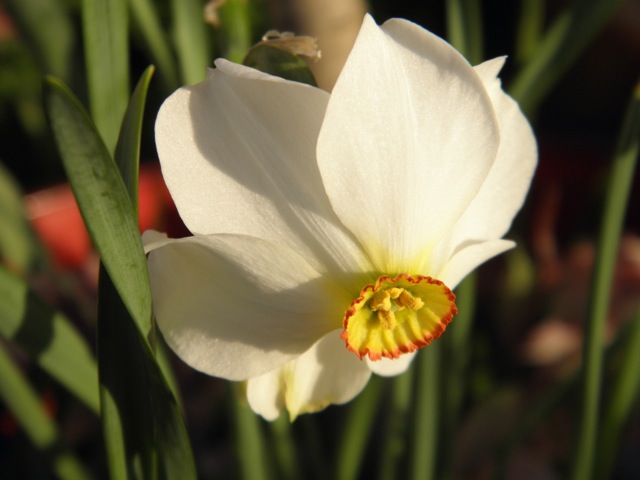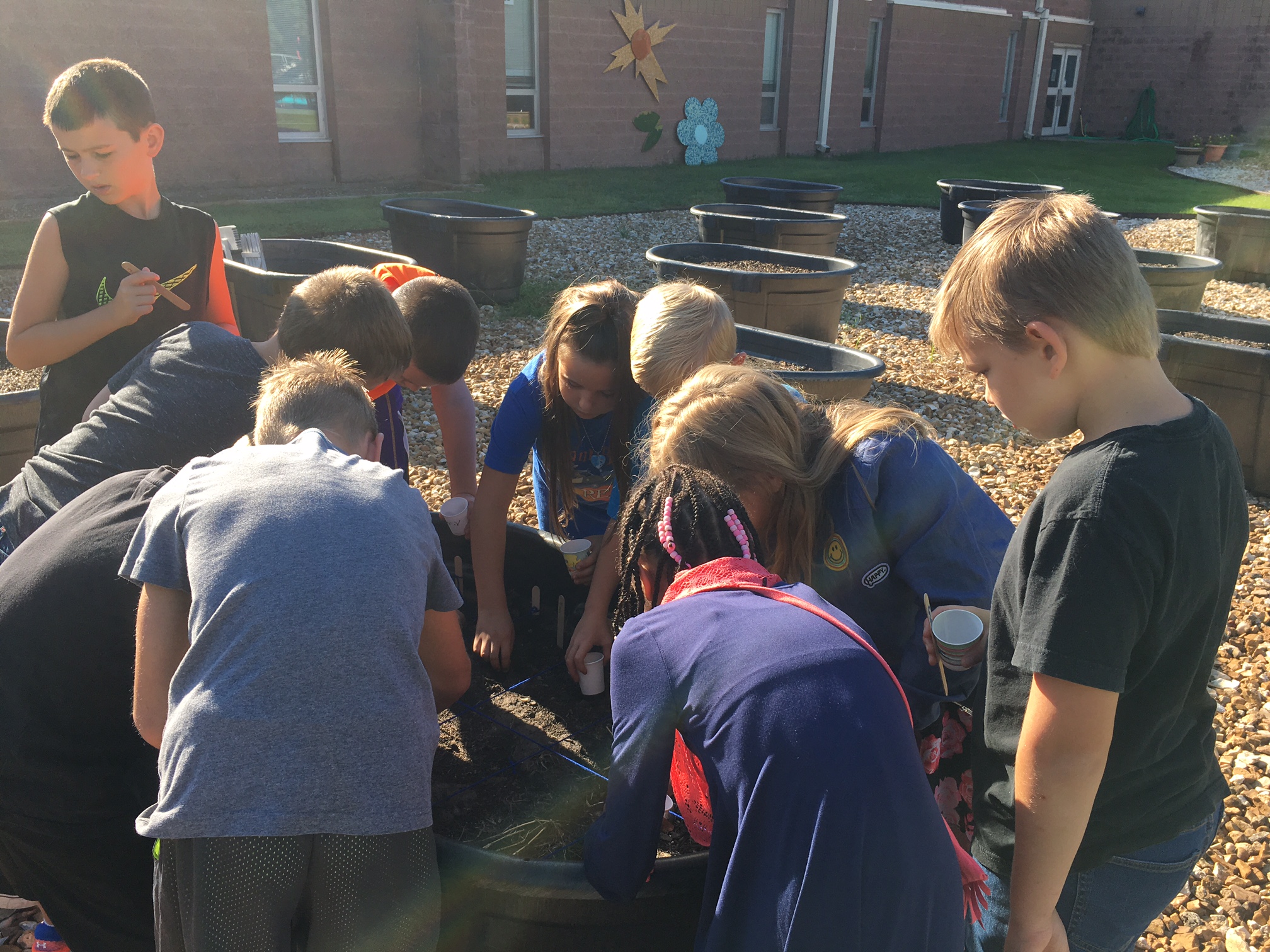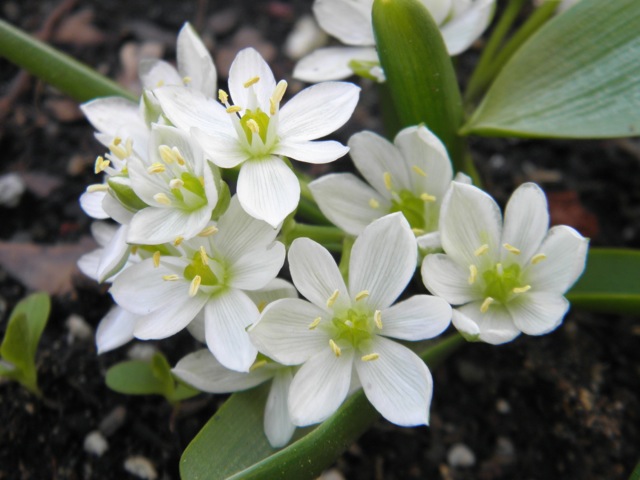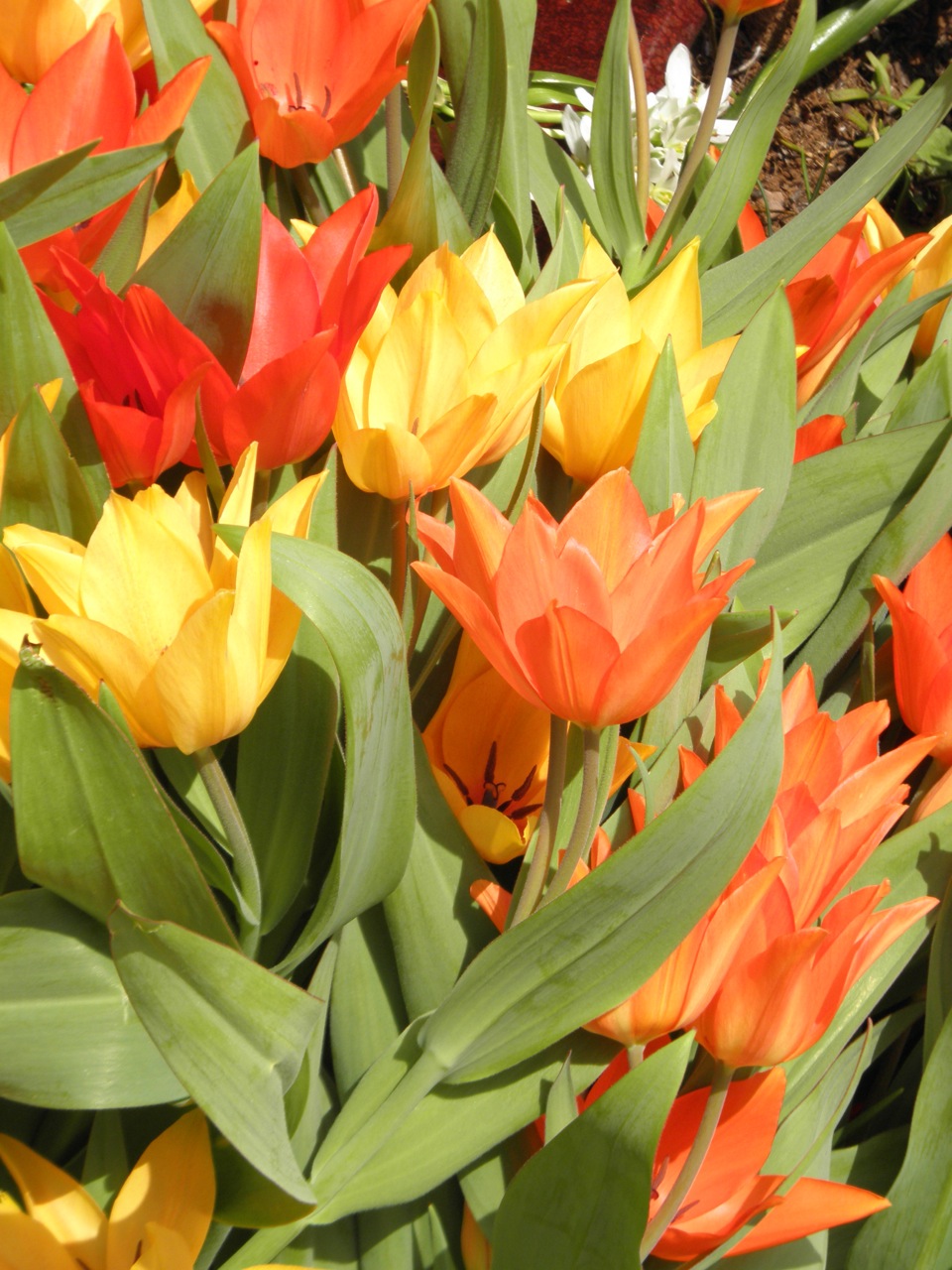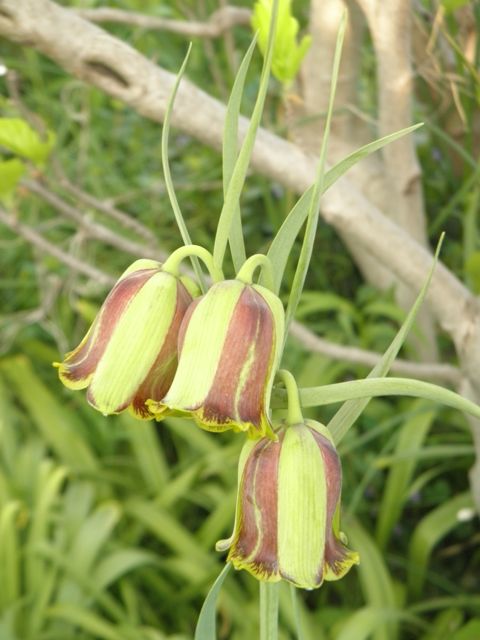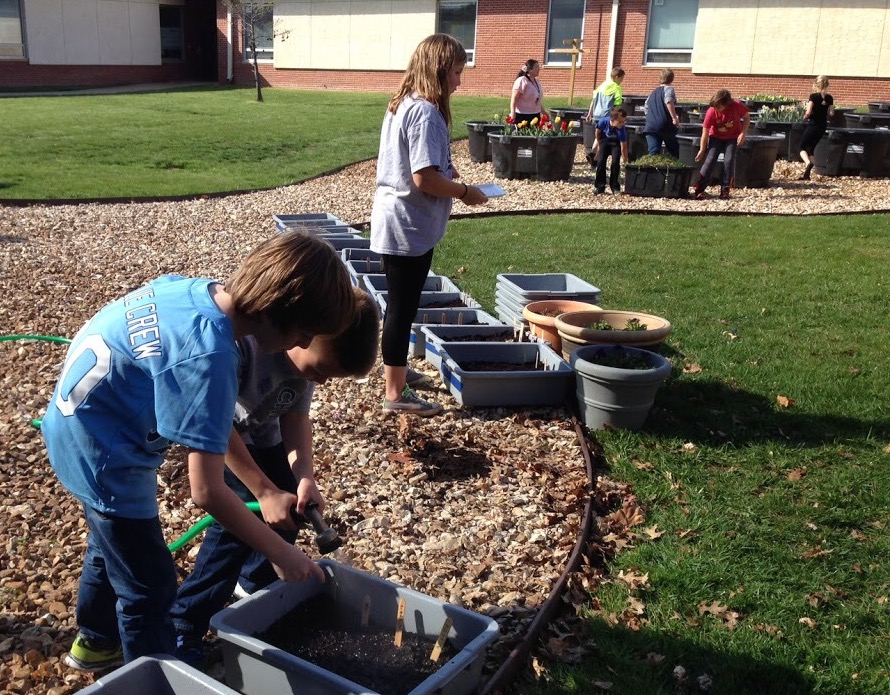Spring has sprung! Time for daffodils, fritillaries, and radishes!
Click Here to Download PDF Version
The Vernal Equinox brings Springtime!
As the Northern Hemisphere leans towards the Sun, we begin to warm up and Mother Nature wakes up. For many of us it has been a long, cold winter. It may take a few more weeks for the soil to warm up, but the journey towards sunny, warm, colorful days has begun.
Daffodils are the Symbol of Spring
Fritillary bells dangle in the breeze.
Be sure to look in the base of the bell where the nectar pools lie.
New Gardeners
Don’t miss the spring show! Daffodils, tulips, scilla, anemones, crabapples, peaches, cherries, hellebores, marsh marigolds, bluebells, and others make spring exciting. The early bloomers are the most anticipated plants in the garden. Like a cup of water when you are parched, they provide relief and hope. Go to botanic gardens, public parks, and even garden centers just to look and see what beauties are available to chase Jack Frost away.
Sow mustards, lettuces, spinach, radishes, broccoli, cabbages, and other cool season crops. They need cool temps to develop properly and taste their best. Start them now, so you can harvest before hot weather arrives.
Great for Kids
Fast developing crops like Amethyst radish and miner’s lettuce are great cool season options for planting with kids.
Experienced Gardeners
Fertilize your daffodils, snowdrops, and other spring bulbs to help them multiply and put on a bigger show next year. Although they don’t require it, fertilizing now helps daffodils and other spring bulbs produce larger bulbs and more offshoots. If your bulbs are well fed, nearly all but the baby bulbs will have flowers.
Don't overlook smaller bulbs like scilla and ornithogalum
Prep the garden for the season. Clear out any old garden debris left from winter. If you mulched or composted heavily in winter, then pull back the layer to 2 inches so the sprouting plants can emerge easily. Reestablish paths that are fading or overgrown. Start weeding early while it’s still easy to get them.
“Although they don’t require it, fertilizing now helps bulbous plants produce larger bulbs and more offshoots.”
Educators
Get your students outside! Use gardens, parks, woodlands, fields, or even concrete courtyards to break up the school day and refocus the students. Studies show that many students, boys in particular, struggle to learn from only visual and auditory signals. Give them a chance to use their hands and muscles in projects that promote critical thinking and cooperative learning.
Get Those Students Outside! Studies show that many students, boys in particular, struggle to learn from only visual and auditory signals.
“Get students outdoors with projects that promote critical thinking and cooperative learning while linking the garden to science, math, reading, social, and cultural standards.”
We’re helping one of our junior high schools start their Growing Pride initiative. They had an enclosed courtyard with little happening but weeds. During winter, we began digging weeds, removing gravel, shaping the land, and building raised beds. Now that spring has officially arrived we’ll switch to sowing seeds, planting seedlings, and cutting bouquets of lilacs.
With planning and good luck students will be able to harvest before the school year ends.
The students chose to grow flowers and veggies. Including them in all the processes of the garden installation bestows a sense of ownership to the students. Before the first cabbage is planted, we have already grown school pride. And linking the maintenance to science, math, reading, social, and cultural standards makes garden tasks a justifiable and fun part of every day.
“When planting cool season crops with students, choose fast developing ones, like Amethyst radish and miner’s lettuce.”
Classes and Coaching
Need help with your home, church, community, or school garden project? Reach out to us, we're here to help! Get Out & Grow!


